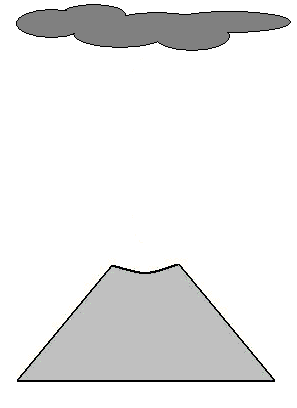Lukyanenko Yuliya
Geotechnology and Management faculty
Speciality: "Ecology of mining technologies"
Theme of master's work: "Choice and grounding of parameters of technologies of heap rock use at the mine "Oktyabrsky rudnik " with the purpose to reduce its harmful influence on the environment."
Leader of work: prof. Artamonov Vladimir Nikolaevich
Materials on the theme of master's work: Library | Links | Report about the search | My fascination
ABSTRACT

The Purpose of this is work to develop recommendations on extinguishing of separate combustion centre, which parameters (form, size, temperature) are defined according to the results of temperature photography.
This work is carried out in accordance with requirements in the following document:
- Safety rules in coal mines.
- Guidance on prevention of spontaneous combustion on extinguishing, recultivation of waste rock heaps of coal mines.
- Instruction on prevention of spontaneous combustion, extinguishing and development of waste rock heaps of coal mines.// Collection of instructions to safety rules in coal mines. / Kiev, 2003.
- Technological schemes of formation, prevention of spontaneous combustion on extinguishing of flat waste rock heaps. / Kiev, 1995.
The working flat waste heaps is situated on the territory of the mine next to not- working heap 2, which was exuded from the burning ones in 1967. To the east and north-east from the heap there are living areas and a hospital. The heap occupies almost all the given territory which is 239000 m. The project height of the heap is 70 m. The actual height is 56m (maximum). According to the project the left service term is 47 years. In the waste rock heap the combustion centre appeared in 1972, they were liquidated. As the result of temperature photography showed (in 1999) the temperature of the rock at the depth of 2,5 m was not higher than 80 Co. However in 2001, according to temperature photography there were found combustion centre. The heap was divided into 6 sections for easier description of its combustion conditions.
On the basis of visual examination of the heap, carried out in September 2005, and the result of temperature photography during 2005, the following facts have been defined (in comparison to the condition of 2003)
Section 1. For the analysed period the rock in this section wasn't piled. The temperature of the rock at the depth of 0.5 m is 23-24 Co, i.e. is usual for a mine heap. Thus, the combustion centre with temperature 36 Co disappeared.
Section 2. In this section the rock also wasn't piled. The combustion centre was covered with clay. The maximum temperature of the rock at the depth of 2.5 m fell from 90Co to 72Co. Thus, the combustion centre was liquidated.
Section 3. . In this section, as well as section 1 and 2, the rock wasn't piled. The centre was covered with clay only partially on the horizontal surface. The maximum temperature of the rock at the depth of 0.1 and 0.5 m was 105 Co and 148 Co correspondingly. It almost didn't change. But the combustion centre area increased from 15.0 m2 to 31.5 m2 which led to the increase of harmful gases emission from 16.86 t/year to 40.28 t/year.
Section 4. . In this section no works were carried out. The temperature conditions at the depth of 0.5 m were the same. The section had only one part with comparatively high temperature, which was 32 Co.
Section 5. At the junction of section 5 and 6the rock was piled, which led to change of its configuration of this section. Almost all the horizontal surface of the combustion centre was covered with clay. Due to this the combustion area decreased from 37.5 m to 2.5 m, and maximum temperature at the depth 0.5 m fell from 170 Co to 88 Co.
Section 6. As has been mentioned, on the section the rock was heaped, which led to change of its configuration. The section is not-burning. The maximum temperature at the depth 0.5 m was in the place of heaping and was higher than 28 Co. According to the data of temperature photography it was determined, that combustion takes place in
The waste rock heap belongs to the group of burning ones. The number of combustions centre in the heap is not very big. They are located the near places of waste rock loading and emit sulfurs dioxide, carbon oxide, hydrogen sulfide and nitrogen oxide. More over, from the surface of the heap the coal dust is emitted into the atmosphere.
In 2000, 110093 tons of waste rock was dumped onto the heap.
Extinguishing of combustions centre by the isolation method has given positive results. However works aimed at extinguishing of fires must be carried out more effectively.